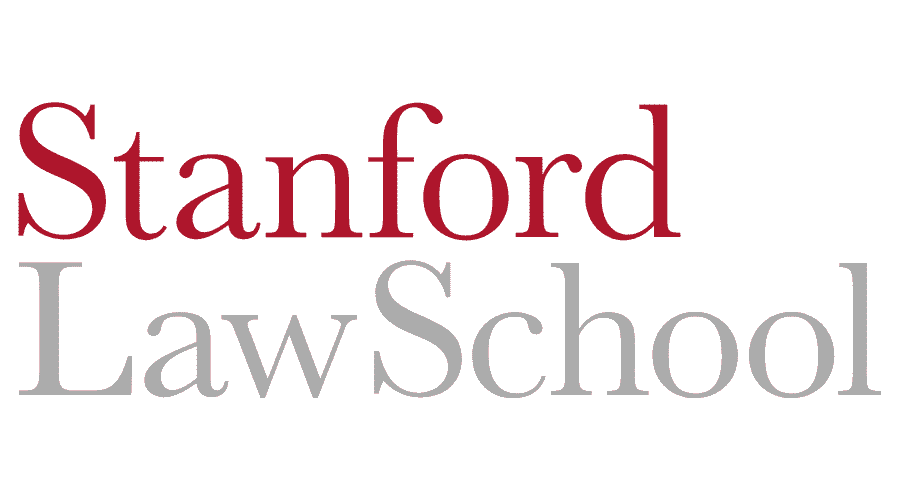
Set in picturesque Palo Alta, California, Stanford Law is one of the most prestigious law schools in the world. The law school opened its doors in the late 18th century with the hiring of Benjamin Harrison, the former President of the United States, and the development of a curriculum in legal studies. Since that time, Stanford Law has taken the lead in innovation in the education of lawyers. Stanford Law also maintains an extremely low faculty-to-student ratio (7 to 1) and admits only 180 students each year. Starting in the 1960’s, Stanford Law has actively sought the best and brightest African-American students and has a unique history in educating minority students.
Education
For over 10 years, Stanford Law School has utilized a unique quarter system as opposed to traditional semesters. The innovation has allowed additional cross-disciplinary studies as the general university calendar is based on three quarters: Autumn, Winter and Spring. For their first two quarters, Stanford Law students take a prescribed course load in the traditional areas of legal studies plus a legal writing course, a course in Federal Litigation, and up to 5 elective credits. During the third quarter, students take a second section of Federal Litigation and an additional 7-12 elective credits.
In their second and third years, students must complete an additional 82 quarter units over six quarters. Stanford Law allows for over a third of these 82 units to be obtained through courses in other programs (granted that they are approved by the law school). In addition, students must complete a course in legal ethics, satisfy the writing requirement, and successfully complete a “pathway” of experiential learning. Stanford curriculum encourages student to leverage technology and incorporate inter-disciplinary studies into their education.
Additional Programs
Stanford Law School offers three masters programs and an advanced doctorate. The masters programs are the Master of Law (LL.M), Master of the Science of Law (JSM), and Master of Legal Studies (MLS). The LL.M is the traditional masters program focusing on one of five concentrations whereas the JSM program focuses on international studies and admits primarily students whose principal legal training was in another country. The last option is taught for non-lawyers who need a background in the legal foundation. Finally, Stanford Law does admit a small number of students who complete the JSM to continue on to receive a Doctor of the Science of Law (JSD).
Due to its emphasis on inter-disciplinary learning, Stanford Law allows for students to combine their J.D. program with any graduate department include a Master’s degree, an MD, or a PhD. Stanford Law’s proximity to technology hubs such as Silicon Valley encourage students to combine their legal education with advanced studies in medicine and technology.
Career and Career Placement
As expected from a world class institution, upwards of 98% of Stanford Law graduates are employed within 10 months of graduation, most in a career that requires a law license although 40% of these careers are not in traditional law firms. Graduates who do work in law firms, most work in large firms. A substantial portion of Stanford Law graduates accept judicial clerkships (over 30%) mostly in the Federal Courts in California.
The Career Service center at Stanford Law is split. The Office of Career Services covers traditional private sector jobs while public sector jobs are covered by the John and Terry Levin Center for Public Service and Public Interest Law. Both career options offer a staff of advisers who help arrange on-campus interviews and counsel students on the range of options available to Stanford Law graduates.
Experiential Learning/Distance Education
Stanford Law is positioned at the front of experiential learning through its clinic, its policy labs, and a wide array of centers dedicated to the most challenging legal problems in the world.
Stanford Law’s Mills Legal Clinic provides students with an opportunity to practice law full time without additional academic requirements. Students represent clients in matters both large and small as well as provide legal services to many who cannot afford representation.
Stanford Law’s policy labs combine real legal problems with real clients to allow students the opportunity to apply rigorous data to the systematic examination of public policy issues. True to Stanford Law’s focus, these labs are inter-disciplinary while emphasizing collaboration.
Stanford Law is also home to over 25 centers that focus on broad and unique areas of law including the CodeX center which focuses on the development of computational law and the application of advanced computing to the practice of law. Like the CodeX center, Stanford Law centers work in focused areas to explore challenging problems and provide solutions through research and advocacy.
Student Life
Stanford Law offers a unique experience for all its students in one of the most thriving areas of the country. The law school has over 60 student run organizations and publishes 12 student journals. The law school provides a dedicated office to Student Life and helps organize a number of events both academic and social.
The town of Palo Alta is roughly 30 minutes south of San Francisco with proximity to the Pacific Ocean and the mountains of California. The University plays a central role in the town’s life and students enjoy the rich culinary and recreational opportunities in the area.